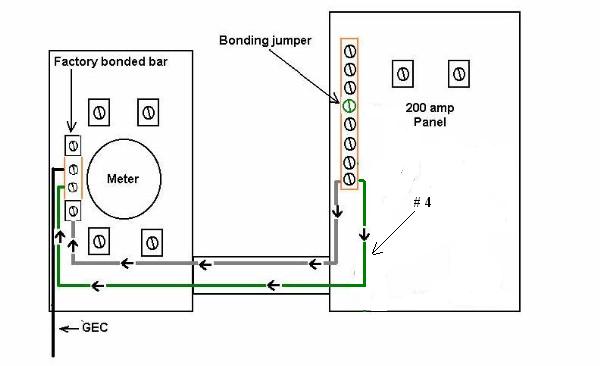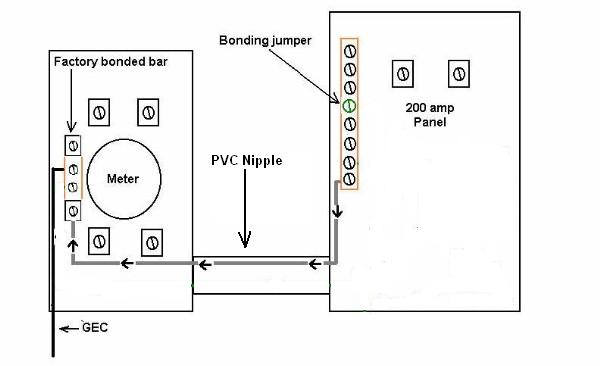Re: Bonding meter can
Robbie, welcome to the forum. The gang here, particularly Bob, have helped me tremendously in understanding this stuff. I hope you stick around.

Originally posted by Robbie Romex:
250-90 Bonding shall be provided... to ensure...the capacity to conduct safely any fault current ( conduct to where the grounded or grounding conductor ?)?
It doesn't say. Why? Because physics answers that for us.
Electricity is seeking any path back to it's source. So, you're asking, which path back to it's source, grounding or grounded? You can see the confusion, because it doesn't specifically lay out a cut-and-dried requirement, leaving options open.
You, personally have to determine the point where the grounding system begins to exist in an installation. If the point is acceptable in the meter can, then that is the point, and no connections can be permitted between the grounding and grounded conductors after that point. If that point is the disconnect, then that's where the "last stand" of the neutral serving as a "grounding" conductor is.
Maybe I should read up on the relationship of bonding to grounding?
Once it clicks, you'll be amazed at how simple it really is: look at the definitions.

NEC-2002 100-Definitions
Bonding (Bonded). The permanent joining of metallic parts to form an electrically conductive path that ensures electrical continuity and the capacity to conduct safely any current likely to be imposed.
Grounded. Connected to earth or to some conducting body that serves in place of the earth.
The ultimate point of bonding: To provide a current path that will open OverCurrent Protective Devices (OCPD's) so that "faults" are killed quickly.
The ultimate point of grounding: Lightning protection and such.
So the connection to the neutral ahead of "that point" where the "bonding system", accomplishes it's primary function: If a hot conductor touches the case of the meter can, a "line-to-case fault" as Bob's picture showed, then the neutral will begin sending that fault current back to it's source, the transformer.
BTW, I've seen your meter can, I know exactly what you are talking about (maybe).
If your grounding system is connected to the meter can, and that ^&%*$ screw hidden under the neutral with the red tag on it is still in place, you have a parallel path for neutral.
Look at your meter can. Remove the neutral (mentally). Now there is a grounding conductor serving in place of the neutral between the meter can and the disconnect, because the neutral and grounding conductors touch
twice, once in the meter can and once in the disconnect.
The lights are still on, it still has a path back to the netural. You can't do that. The "grounding" conductor will carry current
even with the neutral in place, and will burn up.



